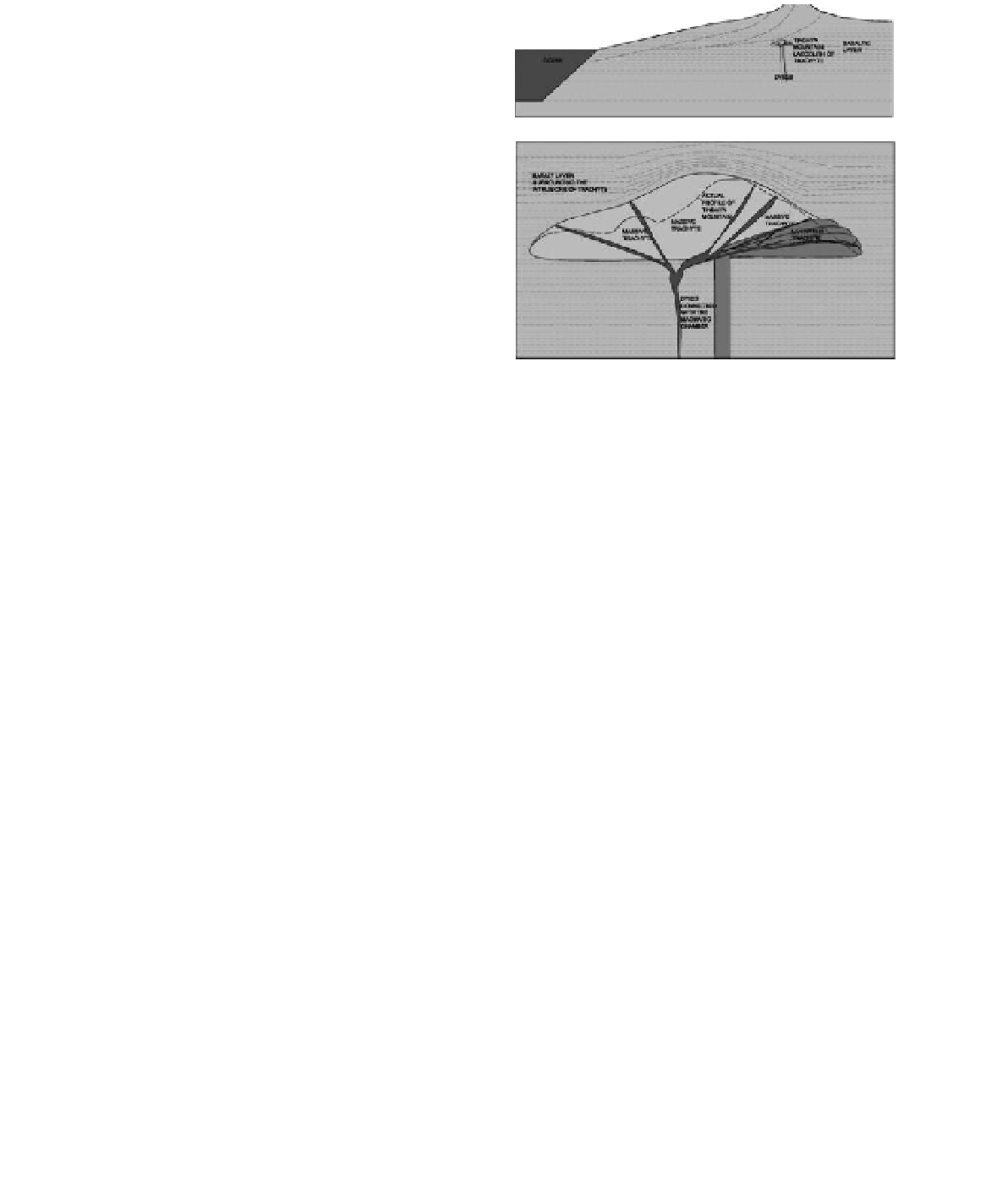Environmental Engineering Reference
In-Depth Information
in the field campaign of the project the follow-
ing enterprises were involved: Técnicas especiales
de Perforación (TeP), sorein, in situ Testing and
Mesy. The laboratory tests were executed at the
Mining school of the Polytechnic University of
Madrid and at the Geological Faculty of the Uni-
versity of oviedo. The calculations were done by
using the codes Flac
3D
and 3Dec and were real-
ized by itasca spain.
The project was divided in 3 phases:
- Phase i (2003): study of alternatives based on
initial fieldwork without intrusive investigations
on the mountain.
- Phase ii (2005): Geotechnical investigation with
boreholes and laboratory and in situ tests in
order to confirm the technical viability of the
project.
- Phase iii (2006): Detailed General Design.
chillida wanted that Tindaya cavern were a
sculptural empty-space which respected the natural
artistic concept required that all the inner faces of
the cavern, the shafts and the entrance tunnel would
be of natural rock with no visible support elements
and no shotcrete coating. The artistic requirement
for the rock surface to be exposed involves special
challenges for the engineering in addition to the
underground design challenges. Furthermore the
Tindaya Mountain presents many environmental
and preservation constrains which also dictate the
design and construction methods.
after initial studies, the space was situated
within the mountain in essentially sound rock
Figure 4.
laccolith of trachyte and mountain slides.
mass, avoiding the main geological weakness (frac-
ture planes or dykes). in addition the sculpture was
situated at the greatest possible distance from the
area where ancient prints were found to guarantee
their strict preservation.
2
GeoloGY oF TinDaYa MoUnTain
The island of Fuerteventura was formed about
48 million years ago by big volcano shields, which
accumulated gradual layers of basalt during
22 million years. at the place where actually the
Tindaya Mountain is situated, about 12 million
ago a laccolith of trachyte was built due to an ini-
tial intrusion of this material through dykes con-
afterwards a second intrusion of trachyte pro-
duced an elevation of the basalt layer in the circum-
ference. During the Miocene a series of mountain
slides and mountain side erosions of the big vol-
canoes uncovered the laccolith of trachyte located
in its interior and which now represents the actual
Tindaya Mountain.
The rock types which occur in the Tindaya
Mountain are trachyte syenite, which is dominant
and called trachyte for conveniente, and dykes of
basalt and gabbro. The majority of the dykes could
contain weak and weathered rock with groundwa-
ter seepage.
3
GeoTechnical PRoPeRTies
3.1
Field campaign
The scale of the site investigation was unusually
large in order to minimize the risk of encountering
Figure 3.
Vision of the Tindaya cavern.














